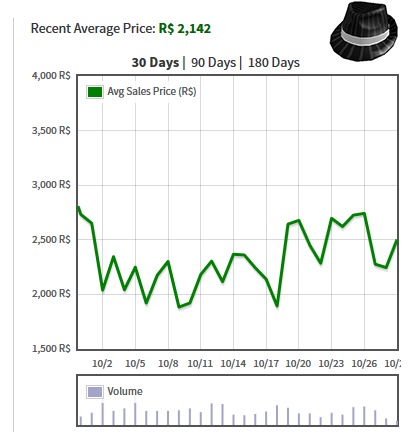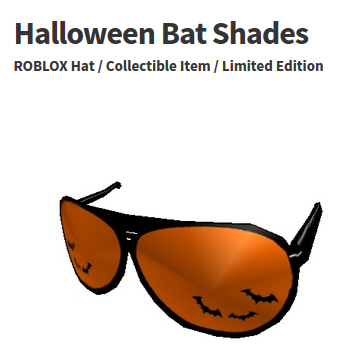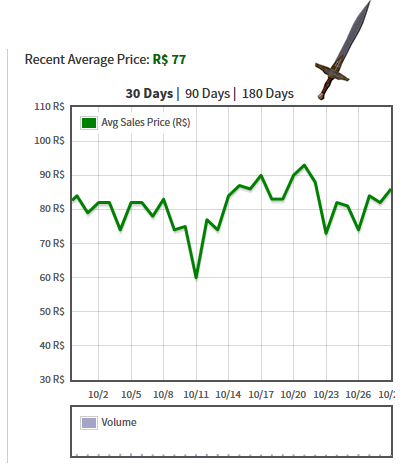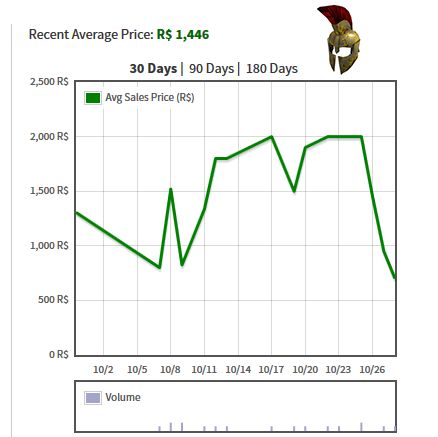Blog Archive
 The ROBLOX economy is in constant motion, and many entrepreneurial-minded users have found methods to leverage it in order to turn significant profits. ROBLOX Creative Director John Shedletsky keeps a close eye on the economy, so we thought we’d tap him to see if he had any helpful advice he could share with those of you looking to dive into the market.
The ROBLOX economy is in constant motion, and many entrepreneurial-minded users have found methods to leverage it in order to turn significant profits. ROBLOX Creative Director John Shedletsky keeps a close eye on the economy, so we thought we’d tap him to see if he had any helpful advice he could share with those of you looking to dive into the market.
There is no guaranteed path to profit
There is no guaranteed way to profit from limited items on ROBLOX, so keep that in mind. If there were a 100% foolproof way to make ROBUX out of nothing, you can bet that a lot of fools would be doing it right now. The purpose of this article is to provide food for thought–it is not a get-rich-quick guide.
What makes items valuable
There are two main factors that drive the value of limited items:
- Scarcity
- Popularity
Scarcity is how many copies exist. It stands to reason that if an item is very rare, it will have more value than an item of which thousands of copies exist. For almost all items, you can tell how many copies exist by looking at the “sold” counter on the item page. The only time this count isn’t accurate is for items that were never sold, such as contest prizes (Subzero Ski Specs, for example, shows zero sold but there are actually thousands in existence). These items are slightly more risky to deal in unless you have a pretty good idea of the scarcity (which you can sometimes infer based on the number of private sellers that exist for the item).
 Popularity also has a huge effect on the value of items. Limited items are by definition in limited supply. So if demand for an item is high, the price will be too. A great example of this principle: among Builders Club members (users who can trade and sell), there are a roughly equal number of Perfectly Legitimate Business Hats and Starry Eggs in circulation. The Legit Business hat typically sells for 2,000-3,000 ROBUX. The Starry Egg? 66 ROBUX. The difference is due almost entirely to popularity.
Popularity also has a huge effect on the value of items. Limited items are by definition in limited supply. So if demand for an item is high, the price will be too. A great example of this principle: among Builders Club members (users who can trade and sell), there are a roughly equal number of Perfectly Legitimate Business Hats and Starry Eggs in circulation. The Legit Business hat typically sells for 2,000-3,000 ROBUX. The Starry Egg? 66 ROBUX. The difference is due almost entirely to popularity.
Liquidity vs. volatility
Knowing the value of an item is helpful, but there is more to this story. It’s possible to also talk about how an item sells, and we’ll use terms from the world of finance to do this.
The “liquidity” of an item is a measure of how many copies of the item sell or trade each day. A very liquid item might trade hundreds of times a day. An illiquid item might trade only a couple times per month. Basically, if an item is liquid, you can easily sell it for the going price in a matter of minutes. Liquid items are as good as cash (which is another factor that makes the Legit Business hat valuable).
The “volatility” of an item is a measure of the price variance. A highly volatile item might sell for X one day and 2X the next. A low-volatility item, in contrast, has a stable price that does not vary much over time. To buy/sell/trade at a profit, one needs the price of the item to move. So while volatile items are riskier to buy, they also offer more near-term reward and profit potential to their owners. It is basically impossible to profit on low-volatility items in the short term due to transaction costs.
This probably sounds very theoretical, but let’s look at how we might use these ideas in practice.
The Riptide Sword
Don’t pay attention to the amount that it’s worth; pay attention to how often it switches hands (the volume chart). About 80 of these swords are sold every single day, which makes them a very liquid asset. This provides you with a sense of security when you’re choosing the items to accept from trades–you know that if you accept a highly liquid item, you’ll be able to turn around and sell it at the drop of a hat. What’s more, you can confidently ball-park how much money you’ll receive for the item (because volatility is low). This is the safe way to trade, but also the least lucrative in terms of big earning. Still, if you deal in enough liquid items and have a lot of patience, you can generate some real currency.
Now let’s look at a different type of item.
Deluxe Roman Helmet
This is a volatile item. Take a look at the graph in the picture above. The price fluctuates wildly over the course of a month. Sometimes it sells for 800. Sometimes it goes for 2,000. Pretty crazy. Would you buy this item at 1,400? Risky.
The liquidity of this item is low. You can actually count the number of times it’s been sold on one hand (typically expensive items are less liquid). Now take a look at the graph, and compare it to the Riptide Sword. Totally opposite, right?
So, if you receive a volatile item in your trade inbox, what does that mean? The security of selling the item is pretty much gone, though the potential earnings if you find the right buyer could be substantial. Accepting volatile items is a sharp trade-off that could result in big bucks, or an expensive item for which you can’t find a buyer. But there’s always the chance that the helmet you took in that was worth 800 ROBUX could be sold to another buyer for 2,000 ROBUX later on down the line. It’s a big risk with a potentially worthy pay off.
Season Steven
 Sometimes popularity can be predictable.
Sometimes popularity can be predictable.
Be constantly aware of the date, and think ahead. Lots of users made a ton of profits this year by buying last year’s Halloween items around August and September. Buy holiday gear months before the actual holiday, and you might be surprised by how many people will want it when the actual holiday arrives. Seasons are a big deal for users on ROBLOX, and getting seasonal gear helps them feel in the spirit.
More ideas for people who like math
We’ve talked about some simple financial concepts and how they apply to the ROBLOX virtual economy. Students of economics know that these conceptual frameworks can become arbitrarily complicated. The main reason is that economics is about competition and a slight edge can be very valuable. If you are mathematically minded, you might enjoy thinking about how some of these ideas might be applied to your ROBLOX transaction strategy:
- CAGR (as it applies to individual items as investments)
- Volatility arbitrage (taking advantage of predictable increase in per-item volatility over time)
- Alpha (measuring the quality of your investment prowess)

